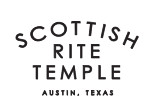The Austin Turn Verein was organized under a charter granted by the Twelfth Legislature. It was originally located at Scholz Garten, but having outgrown its quarters in 1871 purchased the north half of the block between Colorado and Lavaca Streets on Eighteenth Street and erected the large stone building, which was completed in 1872, the building costing $28,000.00. The architect was a Mr. Theilapape, at that time Mayor of San Antonio, and the completion of the building was celebrated by three days of feasting and dancing and was one of the most noted social functions of the day.
Its President at that time was H. O. Heffter, now living at Leipzig, Germany, and its Secretary was Ed Black, now with the firm of John Bremond, while Henry Bastian, who, during the last twenty-nine years has been an employee of the post office, was the custodian of the building and lived on the premises.
The following persons still living here were among those who were prominently connected with the Austin Turn Verein: Henry Bastian,Ed Bock, C. H. Guenther, J. P. Schneider, A. P. Scheider, F. Dohme, L. N. Goldbeck and Prof. Herzog.
The building was constructed by F. Dohme with stone taken from the Beneke quarries, located between Austin and present dam site. The scenery and stage settings were painted by Mr. Lungwitz, a local artist and also a member of Turn Verein.
The building was the only opera house in Austin at that time, most of the social functions were held there and many merry times were had. One of the memorable events of that day was the Cantata of Queen Esther, in which Miss Ella Carter, who later became Mrs. Dudley Wooten, took the part of Queen Esther.
It was one of the accepted rules of the Turn Verein to observe the German custom of not-treating, each member paying for his own refreshments, while enjoying the companionship of his colleagues and it was the non-observance of this and a certain class distinction that led to the disaffection which finally resulted in the disruption of the society, much to the regret of Austin’s German population, as the moral effect of the gymnastic exercises taught and their healthful effect in the development of the youth of that period was a great benefit.
The large building, 49 x 106 feet, erected by the old Austin Turn Verein for an opera house, originally cost $28,000.00. Some years ago local parties conceived the idea of turning the building into a natatorium and begin drilling a well on the southeast corner of the lot. After drilling and casing some 800 feet dissension arose among the promoters, the well was capped and the project abandoned.
1912 The Ben Hur Temple Holding Association & The Scottish Rite Holding Association
The Ben Hur Temple Holding Association was composed of William G. Bell, H. A. Wroe, M. H. Reed, W. E. Armstrong, and Gus A. Bahn as Trustees, all being members of Ben Hur Temple and of the Scottish Rite Bodies. Ben Hur Temple voted on February 12, 1912, to establish the holding association for the purpose of buying the building. Capital stock amounting to $15,000.00 was issued. The same day the Holding Association purchased the Turn Verein Hall. The Austin newspaper reported the purchase and the proposed plans:
 The first real act of the Association was consummated yesterday by the purchase of the quarter block on the southeast corner of Eighteenth and Lavaca Street, known as the old Turn Verein Opera House. The improvements go along with the quarter lot.
The first real act of the Association was consummated yesterday by the purchase of the quarter block on the southeast corner of Eighteenth and Lavaca Street, known as the old Turn Verein Opera House. The improvements go along with the quarter lot.
The stockholders contemplate remodeling the building, using the Egyptian style of architecture and by the addition of a few Arabic cupolas and turrets expect to create a mosque, which hereafter will be known as the Shriner’s Temple, or the Ben Hur Temple. Such an alteration will be easy, say contractors and builders who have been consulted.
A new hardwood floor is one of the first improvements to be made. The building will be used by the Shriners and the Scottish Rite Masons as a Masonic Club room. When not in use the building will be rented to the general public for social functions, shows and exhibitions of all adaptable sorts.
Many have felt that Austin has long been in need of a medium sized auditorium and the building situated in the physical center of the city near the Capitol, convenient to all car lines, should fill just such a want besides being a valuable addition to the public buildings of the city.
When the sale was finally consummated and the property was turned over the Ben Hur Temple, a ceremony was held. It was given publicity in the Austin Daily Statesman of April 27, 1912:
Ben Hur Ancient Order of Nobles of the Mystic Shrine, is to occupy its new home at Eighteenth and Lavaca Streets in the very near future. Indeed, the furniture of the Order is already being moved into the new quarters, and all meetings hereafter are to be held there.
At the most largely attended “stated” meeting of the year the Temple last night formally took over title to the building – the old Turner Hall – and voted to set aside one-half of the annual dues from now on to pay for it. Also the building is to be fitted up into a modern Shriner’s Temple in the future – as soon as the funds of the organization will warrant such an expenditure.
The old Turner Hall was purchased by a number of Shriners, who formed themselves into an organization known as the Ben Hur Temple Holding Association several months ago. Last night’s proceedings presented merely the transfer of the property from the incorporated Shriners the Temple as a body.
The Shriners paid $15,000.00 for the building. It will cost several thousand dollars more to remodel the structure and fit it up to a modern building for the organization.
The By-Laws of the Order provide that an appropriation of funds on hand may be made for any purpose he organization sees fit at any “stated” meeting, provided ten-day notice is served on he individual members beforehand. It is the plan to set aside enough appropriation in this way during the next few months to remodel the building and fit it up. The building was purchased of the Tallichet estate.
The building purchased by the Ben Hur Temple Holding Association was to be used for the “benefit of the Ben Hur Temple of the Ancient and Arabic Order of Nobles of the Mystic Shrine of the Scottish Rite Bodies of Austin, Texas.” On February 25, 1914, the capital stock of the corporation was increased from $15,000.00 to $40,020.00, and the name was changed to Scottish Rite Holding Association. Thus the Scottish Rite Bodies held ownership of the building and Ben Hur Temple became the tenant. Ben Hur had the right to use the building for its meetings and ceremonial sessions for $150.00 per year for a three-year period, with a five-year option to be effective in 1917.
Another financial problem the Scottish Rite Holding Association had to deal with the 1914 was the acquiring of money to use in improving the building. It was decided to issue fifty bonds valued at $50.00 each and bearing 6% interest. The bonds were sold to the Americana Trust Company of St. Louis, Missouri, and were to be redeemed by May 1, 1924. They were.
In addition to being used by the two Scottish Rite Bodies and Ben Hur Temple, the building was also leased to other institutions on occasion. In January, 1913, the University of Texas signed a lease agreement with the Ben Hur Temple Holding Association for the “use of the hall for five nights, for a series of basketball matches, some of which are to be followed by a dance.” University forces were to practice in the hall for one hour per day, five days each week, and they agreed to replace immediately any “furniture, stoves, fixtures or floor covering upon request.” For these privileges the University of Texas paid $75.00. The Hall was used as a hospital during the flu epidemic of 1918 by the nurses and doctors of Seton Hospital.
 1914 First Reunion at the new Austin Scottish Rite CatheDral, building improvements and cornerstone
1914 First Reunion at the new Austin Scottish Rite CatheDral, building improvements and cornerstone
By October, 1912 Fidelity Lodge and Philip C. tucker Chapter were holding reunions in the new quarters. Frederick Sterzing, a charter member of both Bodies, was serving as Secretary.
Initiation fees for the Fourth through the Fourteenth Degrees totaled $22.00, while the Fifteenth through the Eighteenth Degrees cost $25.00. Dues were one dollar per year for each Body. Committees for the Reunion were: House Committee, William G. Franklin, Chairman; Finance committee, H. A. Wroe, Chairman; Reception Committee, Jewel P. Lightfoot, Chairman; Entertainment committee, Thomas J. Christal, Chairman; Committee of Credentials and Examinations, R. L. Zilller, chairman; Reunion director, William G. Bell.
The year of 1913 and afterwards brought substantial increase in membership to the Austin Scottish Rite Bodies. William G. Bell accurately summed up the situation in August of 1913 when he addressed an optimistic letter to the Dallas Bodies announcing Austin’s Fall Reunion. Bell wrote:
Never before in the history of the Rite have prospects in Central and southwest Texas looked so prosperous as they do at the present time. With the installation of our new scenery and electrical equipment at Austin, much enthusiasm has been created and Master Masons throughout this section of the country are looking forward with great satisfaction to the building up of the Rite in this valley.
So from the dark days came the light. The Spring Reunion of 1914 initiated seventy-five candidates from Austin, Taylor, Kyle, San Marcos, Llano, Marble Falls, Creedmoor, Burnet, Elgin, Del Valle and Bertram.




